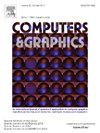SciBlend: Advanced data visualization workflows within Blender
IF 2.5
4区 计算机科学
Q2 COMPUTER SCIENCE, SOFTWARE ENGINEERING
引用次数: 0
Abstract
Scientific data visualization is essential for analysis, communication, and storytelling in research. While Blender offers a powerful rendering engine and a flexible 3D environment, its steep learning curve and general-purpose interface can hinder scientific workflows. To address this gap, we present SciBlend, a Python-based toolkit that extends Blender for data visualization. It provides specialized add-ons for multiple computational data files import, annotation, shading, and scene composition, enabling both photorealistic (Cycles) and real-time (EEVEE) rendering of large-scale and time-varying data. By combining a streamlined workflow with physically based rendering, SciBlend supports advanced visualization tasks while preserving essential scientific attributes. Comparative evaluations across multiple case studies show improvements in rendering performance, clarity, and reproducibility relative to traditional tools. This modular and user-oriented design offers a robust solution for creating publication-ready visuals of complex computational data.

SciBlend:高级数据可视化工作流程在搅拌机
科学数据可视化对于研究中的分析、交流和讲故事是必不可少的。虽然Blender提供了强大的渲染引擎和灵活的3D环境,但其陡峭的学习曲线和通用界面可能会阻碍科学工作流程。为了解决这个问题,我们提出了SciBlend,这是一个基于python的工具包,它扩展了Blender的数据可视化功能。它为多个计算数据文件的导入、注释、着色和场景合成提供了专门的附加组件,实现了大规模和时变数据的逼真(Cycles)和实时(EEVEE)渲染。通过将简化的工作流程与基于物理的渲染相结合,SciBlend支持高级可视化任务,同时保留基本的科学属性。跨多个案例研究的比较评估显示,与传统工具相比,在渲染性能、清晰度和再现性方面有所改进。这种模块化和面向用户的设计为创建可发布的复杂计算数据可视化提供了强大的解决方案。
本文章由计算机程序翻译,如有差异,请以英文原文为准。
求助全文
约1分钟内获得全文
求助全文
来源期刊

Computers & Graphics-Uk
工程技术-计算机:软件工程
CiteScore
5.30
自引率
12.00%
发文量
173
审稿时长
38 days
期刊介绍:
Computers & Graphics is dedicated to disseminate information on research and applications of computer graphics (CG) techniques. The journal encourages articles on:
1. Research and applications of interactive computer graphics. We are particularly interested in novel interaction techniques and applications of CG to problem domains.
2. State-of-the-art papers on late-breaking, cutting-edge research on CG.
3. Information on innovative uses of graphics principles and technologies.
4. Tutorial papers on both teaching CG principles and innovative uses of CG in education.
 求助内容:
求助内容: 应助结果提醒方式:
应助结果提醒方式:


